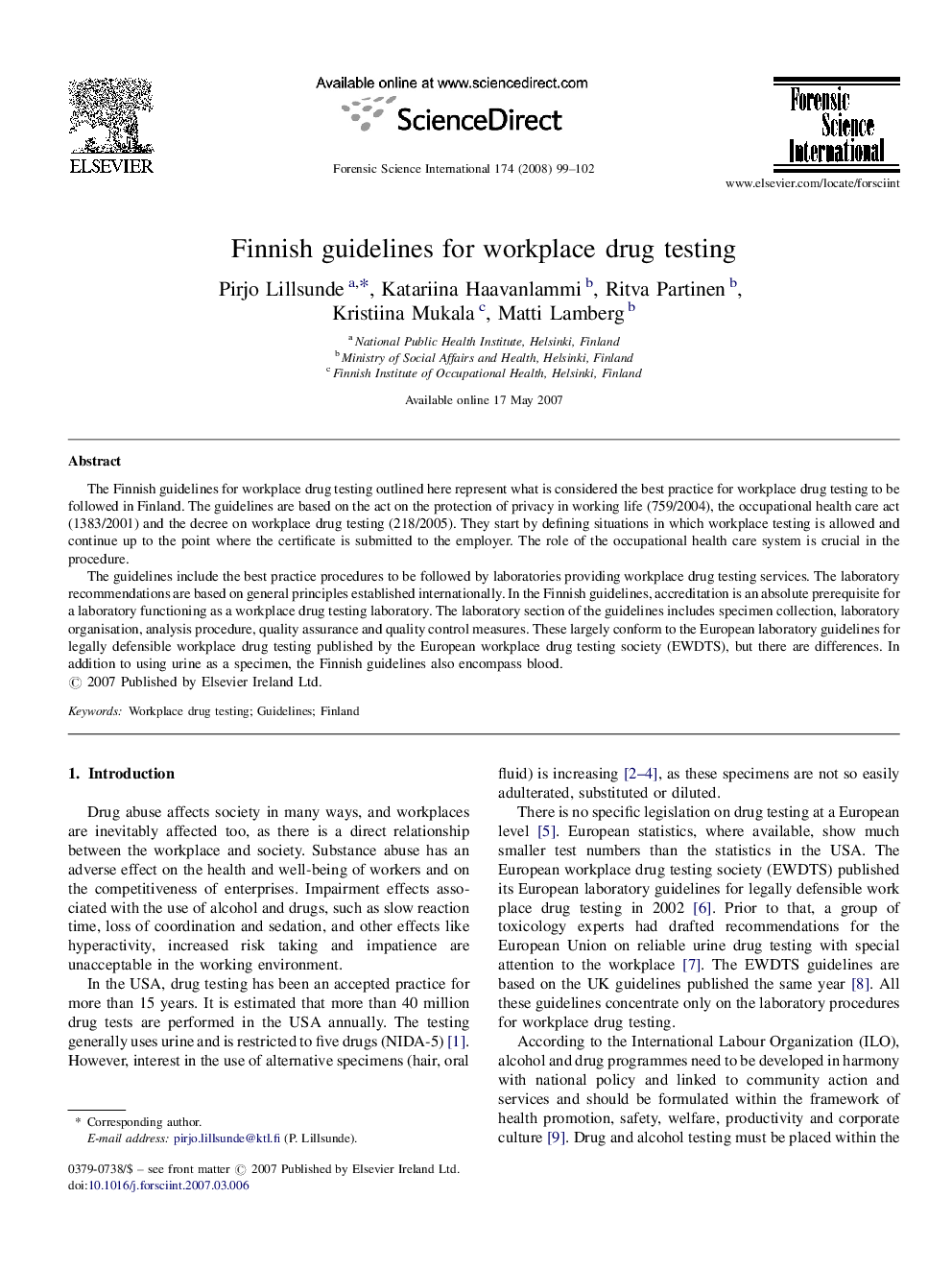| Article ID | Journal | Published Year | Pages | File Type |
|---|---|---|---|---|
| 97745 | Forensic Science International | 2008 | 4 Pages |
The Finnish guidelines for workplace drug testing outlined here represent what is considered the best practice for workplace drug testing to be followed in Finland. The guidelines are based on the act on the protection of privacy in working life (759/2004), the occupational health care act (1383/2001) and the decree on workplace drug testing (218/2005). They start by defining situations in which workplace testing is allowed and continue up to the point where the certificate is submitted to the employer. The role of the occupational health care system is crucial in the procedure.The guidelines include the best practice procedures to be followed by laboratories providing workplace drug testing services. The laboratory recommendations are based on general principles established internationally. In the Finnish guidelines, accreditation is an absolute prerequisite for a laboratory functioning as a workplace drug testing laboratory. The laboratory section of the guidelines includes specimen collection, laboratory organisation, analysis procedure, quality assurance and quality control measures. These largely conform to the European laboratory guidelines for legally defensible workplace drug testing published by the European workplace drug testing society (EWDTS), but there are differences. In addition to using urine as a specimen, the Finnish guidelines also encompass blood.
